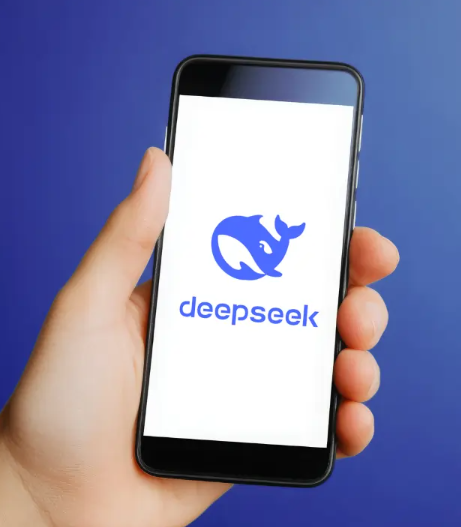
DeepSeek: The Game-Changing Open-Source AI Revolution
In recent years, businesses worldwide have been exploring how artificial intelligence (AI) can streamline operations, enhance automation, and drive innovation. While closed-source AI models, such as OpenAI’s GPT, have long dominated the market, an exciting new player, DeepSeek, has emerged, bringing open-source AI into the limelight.
DeepSeek, a Chinese startup founded in 2023, disrupted the AI industry shortly after its launch, causing a massive shift in the market. The launch of DeepSeek led to a significant drop in Nvidia’s stock valuation, with over $593 billion lost in a single day. The reason for the commotion? DeepSeek’s powerful AI models, including the R1 reasoning model, are offered as open source—allowing businesses and developers to access and adapt them for free. With a development cost of just $6 million, DeepSeek’s approach challenges the high-cost, proprietary models that have dominated the space.
What is DeepSeek?
At its core, DeepSeek is an AI model that functions similarly to ChatGPT, designed to assist users with tasks like coding, reasoning, and solving complex mathematical problems. It is powered by the R1 model, which boasts an impressive 670 billion parameters, making it one of the largest open-source language models available today.
DeepSeek’s R1 model stands out due to its approach to reasoning, where it produces responses incrementally, simulating human thought processes. This methodology not only reduces memory usage but also makes DeepSeek more cost-effective compared to other models in the market, especially considering the development costs are a fraction of competitors like ChatGPT.
The open-source nature of DeepSeek’s R1 model allows for transparency and verification, though the company keeps its training data proprietary. This openness not only fosters innovation but also enables more efficient and affordable AI research, opening up possibilities for deeper exploration of large language models (LLMs).
DeepSeek’s Founder: Liang Wenfeng
DeepSeek was founded by Liang Wenfeng in December 2023, who made waves in the AI industry with the development of its first large language model. Liang, a graduate of Zhejiang University with degrees in electronic information engineering and computer science, has quickly become a prominent figure in the global AI scene.
Liang’s background sets him apart from many other tech founders. He is also the CEO of High-Flyer, a quantitative hedge fund that uses AI to analyze financial data and make investment decisions. Under his leadership, High-Flyer became the first hedge fund in China to raise over 100 billion yuan, a landmark achievement in the financial sector.
Liang has been outspoken about China’s need to shift from imitating to innovating in AI. He advocates for a move towards original thinking and believes that China must lead in AI advancements, particularly in the area of quantitative trading, to compete with the United States.
Innovations in DeepSeek’s Technology
DeepSeek’s approach to AI isn’t just about size; it’s about efficiency and innovation. The DeepSeek-V2 model introduces several breakthroughs, particularly in its architecture. The Mixture-of-Experts (MoE) architecture allows the model to activate only a subset of its parameters at any given time, reducing the computational resources required. This modular approach is a departure from traditional large neural networks, enabling more efficient processing.
In addition, the MLA attention mechanism significantly cuts down on memory usage by compressing the information into smaller “latent” representations. This makes the model far more efficient compared to traditional attention mechanisms, which require vast amounts of memory to store data.
Training Methods that Set DeepSeek Apart
DeepSeek’s approach to training its models is more resource-efficient than the strategies employed by other major players like OpenAI. The company achieved its remarkable results with fewer AI accelerators, less time, and a lower overall cost. DeepSeek’s focus on artificial general intelligence (AGI) is evident in its advancements in reasoning capabilities.
Key innovations in DeepSeek’s training process include:
- Reinforcement Learning: DeepSeek employs a large-scale reinforcement learning approach, concentrating on reasoning tasks.
- Reward Engineering: A rule-based reward system was developed for the model, which outperforms traditional neural reward systems.
- Distillation: DeepSeek uses efficient knowledge transfer methods to enhance learning.
- Emergent Behavior: DeepSeek discovered that complex reasoning patterns could emerge naturally through reinforcement learning, without the need for explicit programming.
DeepSeek’s Rise and Impact
DeepSeek’s rapid success highlights its potential to reshape the AI and tech industries. While competitors like Meta have invested billions in AI development, DeepSeek has proven that sophisticated AI models can be created at a fraction of the cost, using less advanced hardware. This breakthrough challenges the conventional belief that AI development requires massive investments and high-powered infrastructure.
DeepSeek’s low-cost approach promises to make AI more accessible across industries, driving productivity and spurring innovation in previously untapped sectors.
DeepSeek’s Cyberattack and Resilience
Despite its rapid rise, DeepSeek has not been immune to cyber threats. On January 27, 2025, the company experienced large-scale cyberattacks, including a suspected DDoS attack that targeted its API and web chat platform. This attack occurred just as DeepSeek’s AI assistant app surpassed ChatGPT in downloads on the Apple App Store.
Despite the disruption, DeepSeek maintained service for existing users and quickly deployed a fix, showcasing the company’s resilience. While the specifics of the attack remain unclear, DeepSeek’s ability to recover swiftly further underscores its commitment to providing reliable AI services.
Conclusion
DeepSeek is revolutionizing the AI landscape by demonstrating that powerful AI models can be developed affordably and with open-source frameworks. With its MoE architecture and MLA attention mechanisms, DeepSeek is increasing AI accessibility and efficiency, all while challenging industry giants like OpenAI. Despite setbacks like cyberattacks, DeepSeek’s rapid success, combined with Liang Wenfeng’s vision, represents a shift in global AI dynamics—one that prioritizes innovation over imitation.